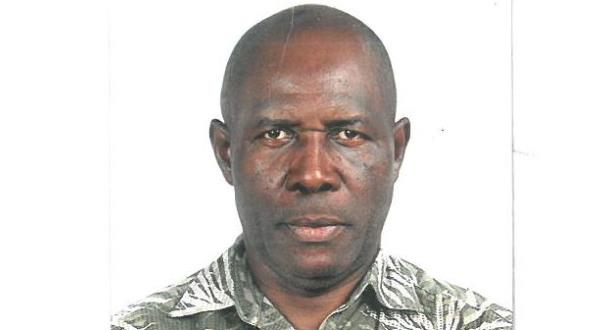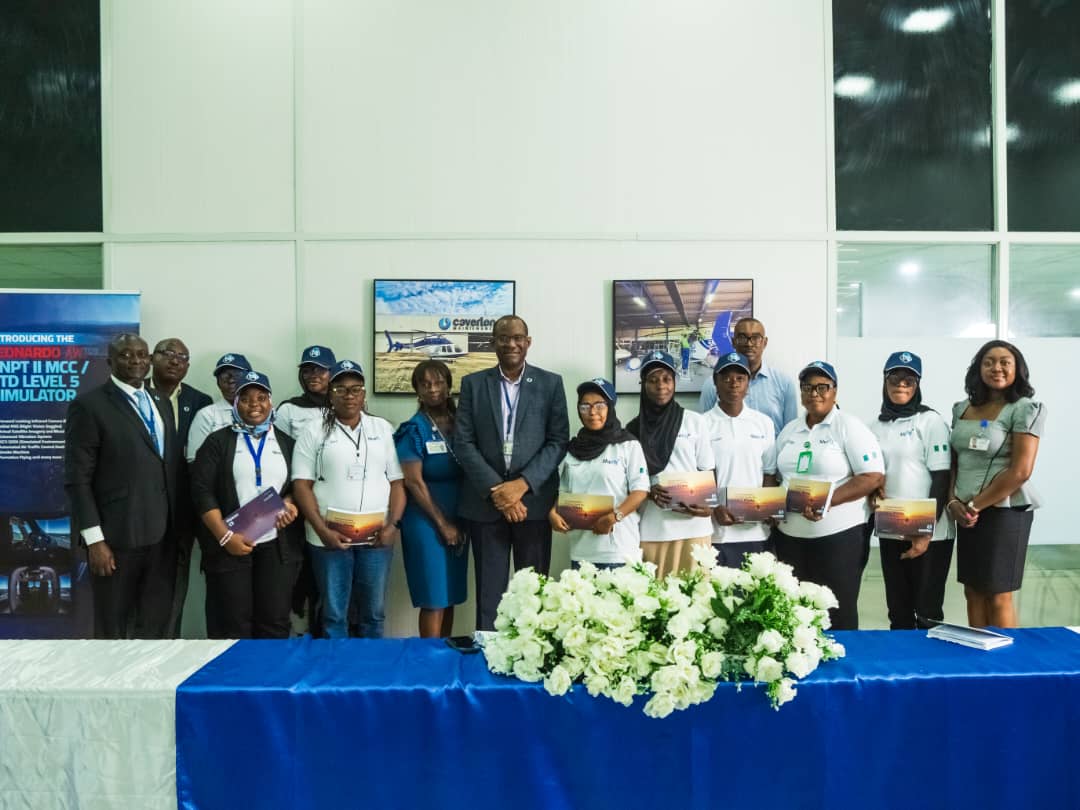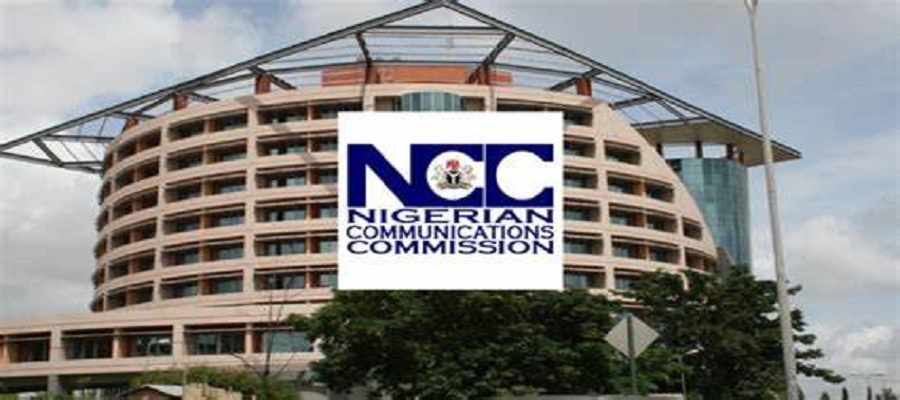Telecom
SATCOM: Creating End-to-End Efficiency for IP Trunking and IP Backbone Networks for 5G

By Andrew Aroh
- Efficiency and more throughput are at the core of emerging technologies for IP at the core of emerging technologies for IP Trunking and IP Backbone networks and applications to drive 5G.

- The latest technology is based on DVB-S2 and S2 Extensions standards and combines a set of innovative technologies in order to fully optimize the Trunking and Backbone Links. These technologies are:
- Adaptive coding and modulation (ACM)
- Cross-layer Optimization
- Bandwidth cancellation
- Clean Channel Technology
- Automated Uplink Power Control (AUPC)
- Wideband in GBs
The Dedicated technologies enhance the data throughput up to record breaking speeds in a large set of IP point-to-point or point or point-to-Multipoint networks.
- Adaptive Coding and Modulation (ACM)
- The tranking business is a highly competitive market with continuous pressure on pricing and profitability.
- The implementation of ACM translates directly into new business opportunities for ISPs, satellite service Operators and Satellite Operators.
- ACM increases the customer base within the same bandwidth. At the same time it introduces ways to reduce OPEX costs and increase the profitability of one’s business. Resulting in a quick Return-on Investment.
- ACM combines DVB-S2 and S2 Extensions with different technologies to get as much data through the same satellite bandwidth as possible.
- ACM will auto-adaptively set modulation parameters to the optimal point and overcomes distortion, noise and variation in the satellite link.
- Through ACM the data rates between uplink and remote sites (for both point-to-point and point-to-mattip networks) can be doubled in the same bandwidth without the need to acquire extra satellite capacity. As such a quick Return-on-Investment can be achieved in a matter of months.
- Optimal Service Availability through ACM
- Communication lines over satellite need to be available at all time to exchange critical information and to keep customer satisfaction at a high level.
- However, fading conditions could seriously disturb the satellite transmission and lead to temporary link losses.
- Fading conditions could be due to different circumstances:
- The choice of satellite/frequency and (Geo, Leo, Meo/C-,X-,Ku-,Ka-,V-band)
- Environmental Conditions (rain, dust, etc.)
- Interference (between two adjacent Satellites)
- Due to the auto-adaptive technology incorporated inside ACM, these fading conditions will no longer interrupt the transmission between the hub and remote nor result in the loss of data.
- In fading conditions, ACM will switch to a more robust modulation and provide optimal availability.
As soon as fading conditions are over, ACM technology automatically switches back to maximum efficiency,
- Moreover, Service Priorities (e.g video, data, voice) and Quality-of-service policies can be auto-adapted on-the-fly depending on the bandwidth availability through cross-layer optimization technology.
- Network Traffic Optimization
- Network congestion reduces the customer experience and the overall throughput over the communications link
- In order to Enhance Speed and Save on bandwidth, Service Providers can easily add Network Optimization to their Trunking Links.
- Network Optimization Consists of the Latest TCP/IP Acceleration and Compression Technologies which increases the efficiency of the satellite link on top of technologies such as ACM.
- Network Optimization is available as option in the Hubs or can added as separate equipment or software.
- Network Optimization technology offers up to 35% bandwidth reduction for typical applications such as file download, web surfing and content streaming.
- The reduction of traffic in both Volume and Number of packets is up to 20% in the forward and up to 90% in the return.
- Network Optimization technology improves customer Experience and results in important bandwidth gains.
- Bandwidth Cancellation:
- Uses Bandwidth Canceller
- Return traffic uses the same bandwidth as the forward traffic
- Implements Superior Cancellation Performance
- Bandwidth gain up to 33%
- Flexible network scenarios are used (SCPC, MCPC)
- Best efficiency with ACM
- Automated Equalink
- Performs Pre-distortion to compensate for the effects of imperfections in the filters and amplifiers of the satellite
- Supports Linear & Non-Linear Links
- Supports Saturated Transponders
- Supports 16/32/64 APSK
- Bandwidth Gain up to 10% (or 2GB)
- Clean Channel Technology:
- As a result of drive for standards, key players in the satellite industry have called for a new satellite transmission standard (S2 Extensions) to expand the existing DVB-S2 standard, specifically for professional satellite links.
- Open Standards such as DVB-S2 and S2 Extensions allow for:
- Interoperability and avoid vendor lock-in
- Increase in the profitability of the industry by creating an economy of scale and reducing the cost of sitcom equipment
- Today S2 Extensions already provide gains up to 37% compared to DVB-S2 through implementation of clean Channel Technology. These gains exceed the results by proprietary systems in the market
- Clean Channel Technology involves 7 improvements in S2 Extensions:
- Smaller Roll-offs
- Advanced Filtering of Satellite Carriers
- Increased Granularity in MODCODs
- 64APSK support
- Linear and Non-linear MODCODs
- Better implementation of MODCODs
- Wideband Support (up to mbaud)
- Clean Channel Technology can be offered as a software field upgrade so that customers can immediately field upgrade so that customers can immediately benefit up to 15% gain compared to DVB-S2 through implementing a lower Roll-off factor (5/10/15%) and an advanced filtering technology.
- Best-of-Trade-Equipment
- Emerging Hubs and Modems support medium and high rate data communication based on the DVB-S2 and S2 Extensions
- Each Equipment embeds the latest innovative technologies to fully optimize IP Trunking and IP backbone networks over Integrated Satellite/Wireless/Fiber Solutions for 5G.
- No extra or new ground infrastructure (antenna or amplifier) needs to be acquired to enable higher efficiencies.
- Next to hubs and moderns, peripheral equipment such as redundancy Switches and Frequency Converters provide the Trunking and Backbone networks with extra stability and
- Hubs and Moderns are installed on each side of the link.
- Networks in Point-to-Point, Point-to-Multipoint (star) or Multipoint-to-point configuration are supported through Single-channel-per-Carrier (MCPC) technologies.
- Within the same Carrier different Services such as data, video, voice, voIP, Wifi, WiMAX, GPRS, 3G/4G can be aggregate using MAP.
- Through the multi-service hub, Service providers with their respective customers are connected with a common forward carrier.
- The return technology can be SCPC or MF-TDMA depending on the return rate, the size of the remote or the network configuration.
- By aggregating the data traffic in a common forward carrier and combing equipment in a single hub, important CAPEX and OPEX savings can be made.
- Extra bandwidth gains are achieved by implementing ACM, clean channel Technology and Cross-Layer-Optimization technologies on top of the Multi-Service network.
- The Multi-service network also allows the service provider to provider IP access service provider to provide IP access service on a direct way or an indirect way (Backhaul, Trunking) to the end user.
- The hub provides internal and interface (RF, IP power Supply)
- The internal redundancy is conceived as two fully redundant chains.
- When there is a failure an automatic switch over to the other chain is performed.
- Even during service windows there is limited downtime since upgrades can be performed on one of the chains with the other chain active in a previous version.
- A failure in the RF path is resolved by switching to the alternative RF interface.
- Multiservice Access Platform (MAP) is a scalable, integrated system that can provide a wide range of voice, video and data services in a single chassis.
- A MAP can be located at the customer premises, in the local Loop/ Last mile or at the carrier’s point of presence (POP).
- Efficient Carrier Grade Gateway and Consumer Terminal Concept
- A typical Broadband solution is based on the Sat3play platform
- The platform provides the means to establish an “always-on” two-way IP Connectivity.
- The basic IP connectivity between Hub and Modem is extended with Quality-of-Service (QoS) in forward and return allowing the deployment of different services.
- QoS is the capability to provide better service to selected network traffic over various technologies such as Ethernet, frame relay, ATM or IP.
- The gateway contains management functionalities to monitor, configure and control all worldwide remotes.
- The Gateway provides all necessary infrastructures to receive and transmit IP data from and to the terminals.
- The Gateway has redundancy on all layers (user, control, management) equipment; RF signal and mains supply inputs.
- Gateways are points of entrance and exist from a communication network.
- Viewed as a physical entity, a gateway is that node that translates between two otherwise incompatible networks or network segments.
- Gateway performs code and protocol conversion to facilitate traffic between data highways of differing architecture.
- A GATEKEEPER is a device that manages an IP network, supporting all gateways, and a gatekeeper e.g low average-to-peak ratios in the traffic Profile. This results in high broadband user experience.
- Unique Design:
- The design of the compact modem and the lightweight low power outdoor equipment; the cost and “Look and Feel” of the terminal is in line with the consumer market requirements
- Lowest Consumer Acquisition Cost:
- With the lowest terminal cost on the market and a unique Do-it-yourself installation, the total customer acquisition cost is not a deterrent factor for capturing new subscribers.
- Self-Installation at Zero:
- Value Added Logistics
- Terminal Customization
- New Business Models, Retail outlet Channels and e-commerce
- Zero CAPEX Internet Service Providers Satellite System
- The require satellite system is Operated as Single-Service-Provider Platform AND Multi-Service-Provider Platform
- On a multi-Service-Provider Platform, new ISPs can start with a Zero CAPEX and the ability to rollout services immediately
- Different Service Providers Share the same HARDWARE and CAPACITY while they are capable of managing their own Customer base and Service Configuration.
- Unlimited Scalability: the total number of users in the Satellite system scales without System limitation. The addition of capacity in order to accommodate more users or offer better QoS comes with an almost linear increase of investment result.
On the other hand, satellite capacity represents the largest cost element in the total cost of Ownership (CTO). Efficient usage of satellite capacity is therefore mandatory.
- The End-Customer is expectation for Satellite broadband offerings are:
- Monthly rate on par with terrestrial broadband services
- Volumes as needed
- True broadband experience-Implementing FUP which assures that all broadband customers enjoy the same experience and have access to quick and reliable service at all time.
Andrew Aroh is President of SSPI Nigeria
Telecom
GSMA Reveals Sub-Saharan Africa as Mobile Money Epicentre

Mobile money has surpassed two billion registered accounts, with over half a billion active monthly users across the globe in the 25 years since its launch.

Leading this market growth is Sub-Saharan Africa with a total of 1.1 billion registered accounts and more than 280 million active 30-day accounts, as recorded at the end of 2024.
This is based on the State of the Industry Report on Mobile Money 2025, compiled by the GSM Association’s (GSMA’s) mobile money programme data and insights team.
Now in its 13th year, the report details the progress of mobile money, with the latest edition indicating transaction volumes and values for mobile money accounts experienced double-digit growth in 2024.
Over 108 billion transactions worth $1.68 trillion were processed through mobile money accounts, for the period under review. This is equivalent to $3.2 million worth of transactions per minute, says Vivek Badrinath, GSMA director-general.
Year-on-year, transaction volumes increased by 20%, while transaction values grew by 16%, up from a 13% increase in 2023.
According to the report, the industry took 18 years to achieve one billion registered accounts and 250 million active users from 2001, doubling in size in the following five years.
Mobile money accounts have “consistently” maintained growth rates above 10% since 2020. In 2024, registered accounts increased by 14% year-on-year to 2.1 billion, while active 30-day accounts grew by 11% to reach 514 million, the report reveals.
Badrinath highlights that Sub-Saharan Africa remains the epicentre of mobile money, accounting for most new registered and active accounts.
“Mobile money has emerged as a powerful driver of financial inclusion and economic growth. Its continued success depends on supportive regulatory environments that promote innovation and accessibility, and help unlock the full socio-economic potential.
“To ensure mobile money remains accessible, affordable and safe, it is vital for governments and regulators to work with financial service providers to support financial literacy programmes, empowering underserved populations and opening new opportunities for financial decision-making.
“Looking ahead, I believe we are well-positioned for the next wave of expansion, where mobile money emerges as the preferred payment service, driving business growth, strengthening economies and shaping a better future for all.”
The report also notes that mobile money continues to play a key role in economic development. By the end of 2023, the total gross domestic product (GDP) of countries with mobile money services was over $720 billion higher than it would have been without them, reflecting a 1.7% increase in GDP driven by mobile money.
“In Sub-Saharan Africa alone, year-on-year, mobile money added around $190 billion to GDP in 2023, demonstrating its sustained economic influence.”
Regional phenomenon
Mobile money is used to buy goods and services, save money and send money to friends and family – both at home and abroad.
Based on the report, the bulk of mobile money accounts in the Sub-Saharan Africa region was driven by adoption and use in East and West Africa.
East Africa was the leading driver of monthly active account growth in 2024, followed by Southeast Asia and West Africa.
Introduced as an offering for financial inclusion for the unbanked, mobile money offerings, such as East Africa’s M-Pesa, have become the region’s most popular mobile money platform.
According to the report, over two-thirds of registered accounts in 2024 came from Sub-Saharan Africa. In 2024, there were more than one billion registered accounts in Sub-Saharan Africa – twice as many as in 2020.
Compared to forecasts from 2019, the GSMA found that registered accounts grew faster than expected, with data from 2024 showing 75% more registered accounts in Sub-Saharan Africa than estimated.
“Growth in active 30-day accounts was driven by East Africa, which contributed 32% of new accounts in 2024, closely followed by Southeast Asia (28%). West Africa and South Asia contributed 21% and 19%, respectively. Double-digit growth in active monthly accounts in 2024 confirmed that millions continue to rely on mobile money for their daily financial needs.
“Between 2014 and 2024, the number of active 90-day accounts as a proportion of SIM cards in Sub-Saharan Africa rose from 10% to 39%. Across other regions, the highest ratio of active 90-day accounts to SIM cards was 8% in South Asia. While some countries in Sub-Saharan Africa can be considered relatively mature, there is still room for growth – both in Sub-Saharan Africa and in other regions.”
Southeast Asia recorded the second-fastest growth rate for active monthly accounts, behind the Middle East and North Africa.
“The region saw active 30-day accounts grow faster than registered accounts, supported by enabling regulatory environments in markets including Cambodia, Fiji, the Philippines and Vietnam.”
The GSMA also reveals that in East Asia and the Pacific many mobile money providers have evolved into full-service financial platforms, offering a broad range of products to match user needs. The most successful providers are often those who are actively innovating the breadth of their offerings, it says.
“Mobile money providers are increasingly offering adjacent financial services like credit, savings and insurance. As of June 2024, 44% of providers offered credit services, making it the most used adjacent financial product. Savings services were offered by around a third of providers, while insurance remains the least common with around 28% of providers offering it.”
Despite progress, the report highlights that several barriers to adoption remain, notably among women. It states that among 12 countries surveyed, eight continue to exhibit a gender gap in mobile money ownership, with little improvement since 2023.
“Limited awareness and low digital financial literacy are significant barriers, particularly for women. However, women who hold mobile money accounts are nearly as likely as men to have used them in the past 30 days.”
Badrinath states: “As we continue our work to close the usage gap, and drive digital and financial inclusion, it is hugely encouraging that almost 60% of mobile money providers have introduced digital skills initiatives. These efforts not only boost financial awareness and combat fraud, they also help to break down the barriers that prevent millions – especially women – from fully benefitting from mobile money services.”
Telecom
NASENI and Caverton Helicopters Launch Training of Female staff on UAV

National Agency for Science and Engineering Infrastructure (NASENI) and Caverton Helicopters have commenced the second batch of training for 10 selected female engineers and scientists from NASENI system-wide in Unmanned Aerial Vehicles (UAVs) technology.

Director Corporate Services, Caverton Helicopters, Mr. Ayodele Omueti (middle) in a group photograph with NASENI female UAV trainees and other Caverton Helicopters officials during the onboarding ceremony at the Caverton MRO Facility in Ikeja Airport, Lagos on Tuesday April 8, 2025.
The six-week training program, which kicked off on Monday 7th of April 2025 at Caverton’s training school in Ikeja, Lagos, is part of the NASENI-Caverton, (NASCAV) ongoing partnership agreement to strengthen the aviation mandate of NASENI.
The training is a key component of the SHEFLY project, a pioneering initiative by the Executive Vice Chairman/Chief Executive Officer of NASENI, Mr. Khalil Suleiman Halilu, aimed at empowering rural women to leverage drone technology for precision farming and increased agricultural yields, aligning with President Bola Ahmed Tinubu’s Renewed Hope Agenda.
In his remarks, Dr. Abayomi Okesola, the team Lead NASCAV project, who spoke on behalf of NASENI management, welcomed the trainees to the epoch training exercise with CAVERTON, citing them as worthy partners due to their impressive track record in aviation and marine spaces.
He said the SHEFLY project is very dear to the heart of the EVC/CEO NASENI who perceived the exercise as a valuable initiative to promote women in STEM fields and bridge the existing gender gap.
Dr Abayomi said the selection of female trainees from the various institutes across different zones was a deliberate effort to enable them manage clusters that will be set up to train rural women in drone technology for enhanced agricultural activities nationwide.
In his welcome address, the MD CAVERTON Helicopters Captain Bello Ibrahim, who was represented by the Director Corporate Services Mr. Ayodele Omueti noted that CAVERTON is a conglomerate with diverse interests in aviation, marine and training, emphasizing that training is essential for ensuring safety and accountability.
He stated that UAVs are among the modern aircraft in the aviation sector, stressing that “the training is timely to ensure we remain current with global technological advancements”.
He therefore urged the trainees to stay focused to acquire the knowledge they have come for.
On his part, the Project Coordinator CAVERTON Drones, Mr. Ese Obukonise stated that the training adheres to aerodynamic principles and is certified by a UK license Authority, ensuring compliance with international standards and best practices.
He said this would enable the trainees maximize their potentials and contribute effectively to NASENI’s initiatives.
He noted that the demand for UAV pilots in the world is exceptionally high and the SHEFLY project would not only promote gender inclusiveness in a male dominated field but also empower women to capitalize on emerging opportunities in UAV technology.
Upon completion, the female trainees will in turn, train rural women farmers to utilize drone technology to improve and boost farm yields.
The SHEFLY project, which will be launched soon at the Aeronautic and Air Vehicle Development Institute, AAVDI, of NASENI in Kaduna, is designed to enhance food security, improve crop yields, and increase the income of rural women farmers.
The project’s objectives include training and deploying female drone pilots to support precision farming, enhancing agricultural productivity and food security, empowering rural women to adopt innovative technologies, and fostering sustainable agriculture practices.
Telecom
NCC Issues 90 Days Deadline to Telcos to Resolve Subscribers’ Unclaimed Airtime

Nigerian Communications Commission (NCC) has issued a 90-day compliance window to telecommunications operators to resolve the long-standing issue of unutilised and unclaimed subscribers’ recharges.

This announcement was made at a high-level virtual stakeholders’ engagement forum held on Tuesday, targeted at refining and enforcing new guidelines that protect consumer rights in Nigeria’s evolving telecom landscape.
Dr. Aminu Maida, executive vice chairman, NCC, whose speech was delivered at the forum by Rimini Makama, executive commissioner, Stakeholder Management, emphasised that the Commission was taking proactive steps to address unused prepaid credit on inactive lines, an issue that impacts millions of subscribers nationwide.
“With the rapid growth of mobile subscriptions and the dominance of prepaid plans, it has become critical to ensure that consumer interests are not eroded through forfeiture of unused credit,” the NCC Boss said.
He stressed the commitment of the Commission to creating a regulatory framework that is fair, enforceable, and aligned with international best practices.
The current Quality of Service Business Rules provide that prepaid lines with no revenue-generating activity for six months be deactivated, and may be recycled after another six months.
The proposed guidance reaffirms the right of subscribers to reclaim their unused credit within 12 months, provided they can verify ownership.
In her remarks, Mrs. Chizua Whyte, head of Legal and Regulatory Services, NCC, presented the Draft Guidance on Unutilised and Unclaimed Recharges, which outlines clear procedures for managing inactive subscriber accounts.
She stated that operators will be required to carry out comprehensive audits of all churned numbers, ensure unused airtime is offered back to subscribers through service alternatives, and strictly avoid monetising forfeited recharges.
Whyte explained that these guidelines are not only aimed at protecting consumers, but also offering regulatory clarity to operators.
She added that the Commission is mandating full compliance within 90 days of the issuance of the final guidance, with non-compliance attracting penalties, including regulatory audits.
The forum attracted wide participation from across the industry, with discussions centred on striking a balance between protecting consumer rights and maintaining operational feasibility.
Participants agreed on the need for greater transparency, stronger consumer education, and consistent notification practices.
The NCC reiterated its commitment to fostering a fair, transparent, and consumer-first regulatory environment.
The 90-day deadline signals a new era of accountability in how telecom operators manage subscriber credits and reinforces the Commission’s role as a guardian of consumer trust in the digital age.

 Broadcasting2 days ago
Broadcasting2 days agoMTN Battles Netflix, Showmax with New Streaming Platform

 News2 days ago
News2 days agoHow KongaFM 103.7 Helped Cure My Insomnia Challenge

 News2 days ago
News2 days agoFG to Invest in Cutting-edge Broadcast Technology

 Broadcasting2 days ago
Broadcasting2 days agoFG Begin Technical Upgrade of Government-Owned Media

 Broadcasting2 days ago
Broadcasting2 days agoProf Osinbajo Seeks Stronger IP Protection in Nigeria, Africa

 General News2 days ago
General News2 days agoMart Networks Brings Comprehensive Cybersecurity Solutions from Infopercept to Africa

 General News2 days ago
General News2 days agoOneData Revolutionizes Caleb University Campus Connectivity, Empowering Students for the Digital Age

 General News2 days ago
General News2 days agoEvans Woherem’s Book, “Building A New Africa” Charts Bold Vision For Africa’s Future



























